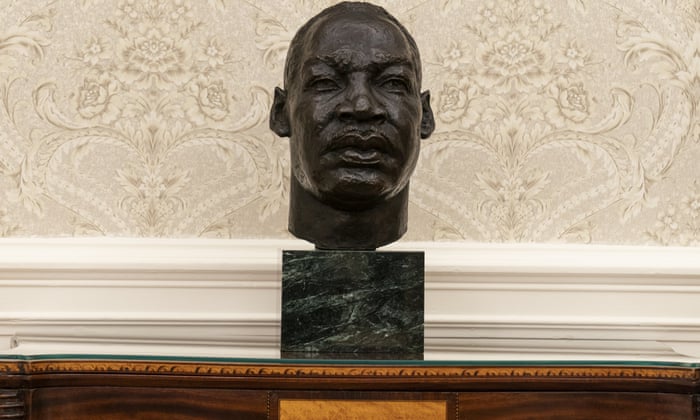Joe Biden’s presidency has brought with it a considerable number of changes. Some of these changes have been to the interior of the White House, where Joe Biden oversaw an artistic revamp within his first days in office. Although the curtains and the Resolute Desk haven’t changed, and the carpet has only been changed to a darker blue, Biden introduced and moved around a host of artworks. Typically, presidents decorate the oval office with art that reflects their aims as a leader. Many view Biden as doing this by including new works that redirect the political messages of Trump. Ashley Williams, the deputy director of Oval Office Operations, has said that Biden wanted to walk “into an oval that looked like America and started to show the landscape of who he is going to be as president.”

Trump’s curation included, for instance, a portrait of President Andrew Jackson put in the pride of place on the left-hand wall. Jackson signed the 1830 Removal Act which caused mass displacement and deaths within indigenous communities. Trump also had a bust of Winston Churchill, a figure whose racist policies and ideas face increasing, and necessary, scrutiny. However, Biden has replaced both of these works. Instead, a portrait of Benjamin Franklin, the founding father and scientist, hangs where Jackson did. Franklin’s inclusion in the office is viewed to suggest Biden’s focus on science and technology to combat the COVID-19 pandemic. Additionally, Biden has replaced the bust of Churchill with one of Cesar Chavez, a Latino American civil rights and labour organizer. Together, these inclusions are a step away from Trump’s active upholding of racist, problematic individuals through artworks, and are viewed as symbolic of Biden’s new social and immigration policies.
Biden has also reconfigured the centrepiece cluster of portraits. In the middle is now a portrait of Franklin D. Roosevelt, the president during the Second World War. Biden’s decision to place Roosevelt in this central location is considered to reveal how Biden similarly sees himself as governing the country through difficult national and global circumstances. Surrounding Biden is portraits of George Washington, Abraham Lincoln, Thomas Jefferson and Alexander Hamilton. Jefferson and Hamilton, founding fathers and fierce opponents of each other in their lifetimes have been symbolically placed opposite each other. Biden’s office has said that this pairing is intended to represent how “differences of opinion, expressed within the guardrails of the Republic, are essential to democracy.”

Biden has also introduced some new busts. New additions to a collection already including Martin Luther King, Eleanor Roosevelt and President John F. Kennedy, are Rosa Parks and Robert Kennedy. The busts of Parks and King, with Cesar Chavez, pay homage to the civil rights movement and help platform influential people of colour in the US’s history.
It is clear to see, then, that the presidential office regards the art and decoration of the White House as able to send powerful political signals. Biden’s rapid turnover of the room only affirms this. Although the art may direct political and social messages, whether this will be matched in policy and leadership remains to be seen. Whilst the universe unanimously agrees that Trump was awful, Biden by no means has a clean and unproblematic political record. Notably, Biden was a key architect of the 1994 crime bill that oversaw disproportionate mass incarceration of black people. Biden also vocally expressed concerns about school desegregation in the late 70s. It is important that Biden is held accountable to the progressive messages laid out by his new artwork – art can be performative, after all.
Image Credit: People.com

